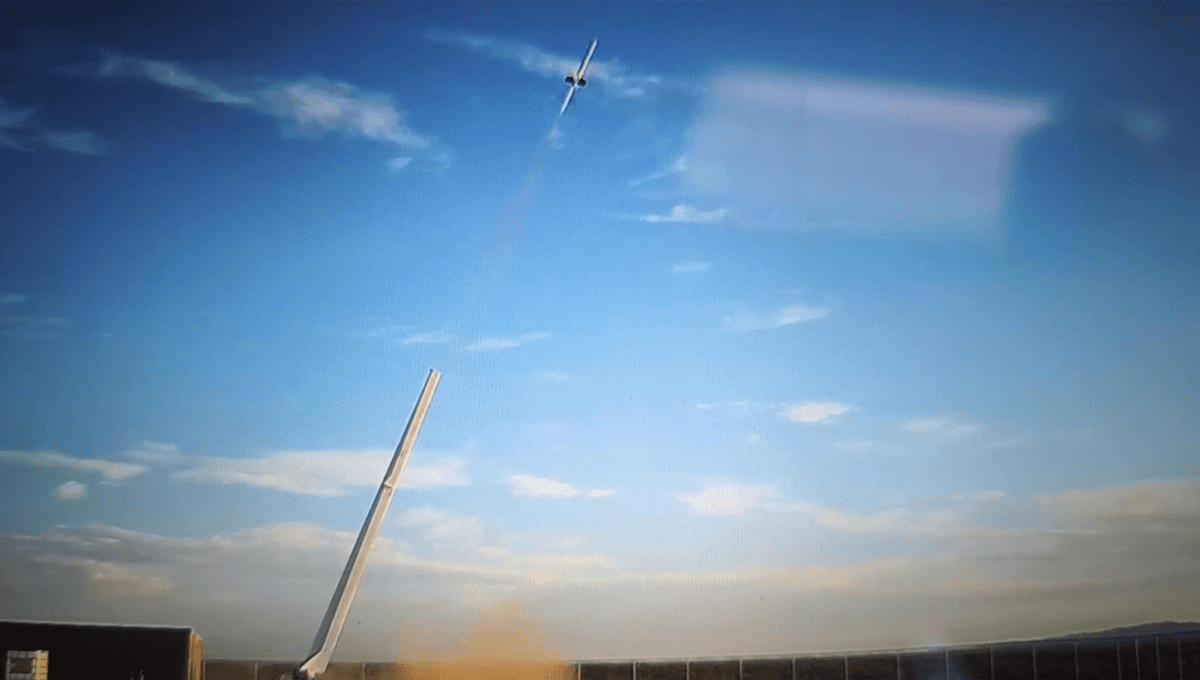
A startup high-speed flight company from Houston, Texas, has successfully tested its Rotating Detonation Rocket Engine (RDRE) ultimately aimed at allowing travel at four to six times the speed of sound taking off from a conventional runway.
RDRE has been talked about as an alternative propulsion mechanism since the 1980s, providing theoretical advantages over traditional methods.
“In propulsion devices, combustion can occur through deflagration or detonation, each having vastly different characteristics. Deflagration is subsonic burning at effectively constant pressure and is the main means of thermal energy generation in modern rockets,” a 2023 paper on the topic published in Scientific Reports explains.
“Alternatively, detonation is a supersonic combustion-driven shock offering several advantages. Detonations entail compact heat release zones at elevated local pressure and temperature. Specifically, rotating detonation rocket engines (RDREs) use detonation as the primary means of energy conversion, producing more useful available work compared to equivalent deflagration-based devices; detonation-based combustion is poised to radically improve rocket performance compared to today’s constant pressure engines, producing up to 10 % increased thrust. This new propulsion cycle will also reduce thruster size and/or weight, lower injection pressures, and are less susceptible to engine-damaging acoustic instabilities.”
Various organizations, including NASA, have been working hard at designing RDREs, with the goal of decreasing flight times, or sending humans to the Moon and Mars. At Spaceport America in New Mexico on Wednesday, Venus Aerospace announces that it successfully tested their own RDRE.
“This is the moment we’ve been working toward for five years,” Sassie Duggleby, CEO and Co-founder of Venus Aerospace, said in a statement. “We’ve proven that this technology works—not just in simulations or the lab, but in the air. With this milestone, we’re one step closer to making high-speed flight accessible, affordable, and sustainable.”
“This milestone proves our engine works outside the lab, under real flight conditions,” Andrew Duggleby, Co-founder and Chief Technology Officer, added. “Rotating detonation has been a long-sought gain in performance. Venus’ RDRE solved the last but critical steps to harness the theoretical benefits of pressure gain combustion. We’ve built an engine that not only runs, but runs reliably and efficiently—and that’s what makes it scalable. This is the foundation we need that, combined with a ramjet, completes the system from take-off to sustained hypersonic flight.”
This is the first time that the concept has been tested with a high thrust engine. The RDRE performed well, but this test was of the system and did not break the speed barrier, as planned.
“Spaceport America was created to make space history, and Venus Aerospace delivered a milestone moment for hypersonics today,” Scott McLaughlin, Executive Director at Spaceport America, added. “Getting a rotating detonation rocket engine to the launch pad is an achievement few thought possible in such a short time. We’re thrilled to host innovators like Venus, whose breakthroughs are redefining what’s possible in spaceflight.”
The team is now planning a full-scale propulsion test of the system, with the ultimate goal of creating what they are calling the Stargazer M4, a Mach 4 reusable passenger aircraft.
“With this flight test, Venus Aerospace is transforming a decades-old engineering challenge into an operational reality,” Thomas d’Halluin, Managing Partner, Airbus Ventures, added. “Getting a rotating detonation engine integrated, launch-ready, and validated under real conditions is no small feat. Venus has shown an extraordinary ability to translate deep technical insight into hardware progress, and we’re proud to support their bold approach in their attempt to unlock the hypersonic economy and forge the future of propulsion.”
Source Link: New Hypersonic Rotating Detonation Rocket Engine Passes Real-World Milestone